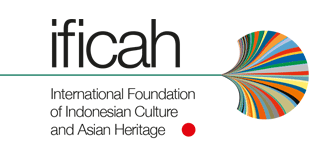
Interviews
KODOGU-DŌ – The Ongoing Journey of Robert E. Haynes
This series explores the nearly 80-year study and research journey of Robert E. (Eugene) Haynes, born on October 28, 1930, in Los Angeles, California—one of the greatest experts on Japanese sword fittings. From his early interests sparked in post-war California to his in-depth studies under Dr. Kazutaro Torigoye in Japan, Haynes‘ dedication has left a lasting impact on this specialized field. Through five episodes, we gain deeper insights into his experiences, research methodologies, and the valuable collections and resources that have informed his expertise.
Part One: Dr. Kazutaro Torigoye
Robert E. Haynes embarked on a significant scholarly pursuit in the 1960s through his studies with Dr. Kazutaro Torigoye, who was the last student of Akiyama Kyusaku (1844–1936) and the leading expert of his day. Reflecting on this pivotal moment, Haynes recalls a conversation before heading to Japan: „Bob, how far do you want to go with all of this (research)? And I said, ‚I don’t know. How far can I go?'“ What began as a formal teacher-student relationship with Dr. Torigoye eventually grew into a deep familial connection, establishing the foundation for Haynes to become one of the „greatest appreciators and judges in the world on Japanese tsuba and fittings.“
Part Two: Manuscripts and Publications
During the early years of Robert E. Haynes‘ research, much of the available knowledge was preserved through handwritten records produced by dealers and experts of the time. In this episode, he shares his experiences with these records, which were the only study materials available at the time.
Part Three: The Mystery of the Goto and Personal Research
In this video, Robert E. Haynes discusses his methodology for dating tsuba, drawing on early manuscripts while incorporating his own research techniques. He offers insights into both traditional approaches and his personal methods, developed through years of hands-on study and examination.
Part Four: The Lonesome Student
In the mid-1940s, a young enthusiast began collecting tsuba at age 15. With limited initial knowledge, he turned to scholarly resources and forged connections with other collectors across California, developing lasting relationships within this specialized field. Over the years, his dedication to studying Japanese sword fittings evolved into an exceptional depth of expertise in tsuba and fittings.
Part Five: Collections
This video provides an overview of significant collections outside of Japan, focusing on both museum holdings and private collections. Robert E. Haynes discusses the most important collections across the United States and Europe and their contributions to the study and preservation of Japanese sword fittings.
IFICAH-Talk I – Dietrich Drescher und der Indonesische Keris, Teil I
Ausgerechnet ein Seefahrer aus Deutschland belebte in Indonesien nach dem zweiten Weltkrieg das Schmieden von Klingen wieder. Dietrich Drescher hat sich über Jahrzehnte ein unfassbares und umfangreiches Wissen über die Keris-Herstellung angeeignet. In diesem Interview der Serie IFICAH-Talk spricht er mit Dr. Achim Weihrauch, einem renommierten Klingenschmied aus Efringen-Kirchen über sein Lebenswerk: Die Wiederbelebung der Keris-Kultur in Indonesien.
